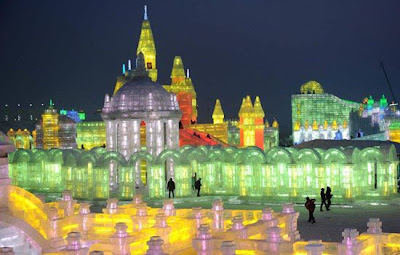A short distance from Shanghai, Suzhou has an illustrious history, striking scenery and the most impressive private gardens in China
Visitors to China's eastern seaboard usually make the metropolis of Shanghai their first stop. But just a hop away by train lies a gem in the country's rich cultural heritage, which, while well-known to Chinese, is rarely visited by travelers from overseas.
Suzhou is famous for its classical gardens and natural beauty. In ancient China its beauty was so renowned that it was included in a popular saying: In the sky there is heaven, while here on the earth we have Suzhou and Hangzhou.
It is sometimes referred to as The City of Gardens because of its spectacular private gardens, or the Venice of the East because of its waterways.
Suzhou's history stretches back 4,000 years. In ancient times it was an important center for the silk trade and today it remains a vital port along China's east coast.
As the capital of the Wu kingdom from the 12th to 4th centuries BC, it is one of the oldest cities in the Yangtze basin and the cradle of Wu culture.
Suzhou has long been a haven for scholars, artists and crafts people, thousands of whom have hailed from the city. It was also visited by Marco Polo in 1276, during his travels along the Silk Road.
Today the city is an eclectic mixture of old and new. The best has been preserved, but there is also a modern story to be told.
The main attractions are Suzhou's pagodas, stone bridges and delicate classical gardens. The city's private gardens are ranked as a UNESCO World Heritage Site.
For travelers interested in modern China, Suzhou is a major port, and is associated with steel manufacturing and food processing.
Here are some of the major attractions:
1. Humble Administrator's Garden (Zhuozheng Yuan) Built in 1513, the Humble Administrator's Garden is a classic example of a southeastern China private garden.
It is in fact one area of a three-part garden complex, each with its own distinctive style and displaying dynastic changes that have been made over the years.
The Humble Administrator's Garden is at the center of the complex, with the Affiliated Garden (Bu Yuan) to its west and the Hermit's Farmhouse (Gui Tian Yuan Ju) to its east.
At the center of the Humble Administrator's Garden is a lake, along the bank of which lie all of the garden's main structures.
Passing through the Humble Administrator's Garden's New World Pavilion (Bieyou Dongtian Pavilion) takes you to the Affiliated Garden. Its major structure is the 36 Mandarin Ducks Hall (Sanshiliu Yuanyang Guan).
The Pavilion of Haitang Flowers Blossoming in Spring (Haitang Chunwu) leads into the Hermit's Farmhouse.
2. Lingering Garden (Liu Yuan) Outside the Changmen Gate of Suzhou, the Lingering Garden is one of the best preserved of Suzhou's private gardens.
Covering an area of 2.3 hectares, it was built in 1583 by Xu Taishi, a bureaucrat of the Ming Dynasty (AD 1368-1644), as his private residence. In 1961 the garden was listed as a piece of national cultural heritage under the central government's protection, and in 2001 it was put on the UNESCO World Heritage list.
The whole garden complex can be divided into four distinct sections: east, central, west and north.
With its fine gardens, delicate and spacious hall, and collection of stones from Taihu Lake, the Lingering Garden is a major tourist attraction.
3. Lion Grove Garden (Shizi Lin) Originally the garden of a Buddhist temple built in 1342, the Lion Grove Garden is famous for its rocks in the shape of lions and is often eulogized in China as the Kingdom of Rockeries.
Together with Blue Wave Pavilion (Canglang Ting), Lingering Garden (Liu Yuan) and the Humble
Administrator's Garden (Zhuozheng Yuan), the Lion Grove Garden is one of the four most famous and representative gardens of an ancient classical style in the city.
Its 1.1-hectare area includes scattered rockeries, corridors, refined pavilions and twisting paths.
4. Tiger Hill (Huqiu Shan)
Located outside the Lumen Gate to the northwest of the city, Tiger Hill, which is about 36 meters tall and covers an area of about 14,100 square meters, contains historical sites dating back 4,000 years to the establishment of Suzhou.
One of the best-known scenic spots on the hill is Sword Pond (Jianchi), which is where He Lu, king of the state of Wu, kept his swords during the Spring and Autumn Period (770-476 BC).
On the hill's summit stands the Yunyan Temple Pagoda, the oldest pagoda in Suzhou and one of the most famous Buddhist temples in China.
The brick pagoda was completed in 961 AD with seven stories and eight sides and leans about 3.5 degrees.
Eating and drinking
Suzhou dishes hold a high place in Chinese culinary culture. More than 1,200 different dishes are credited with having come from the city.
Some of Suzhou's best-known dishes include braised duck in soy sauce and steamed squirrel mandarin fish.
Songhelou and Deyulou, both in Guanqian Street, are among Suzhou's most famous restaurants.
For a post-restaurant drink, head to Shantang Street.

























